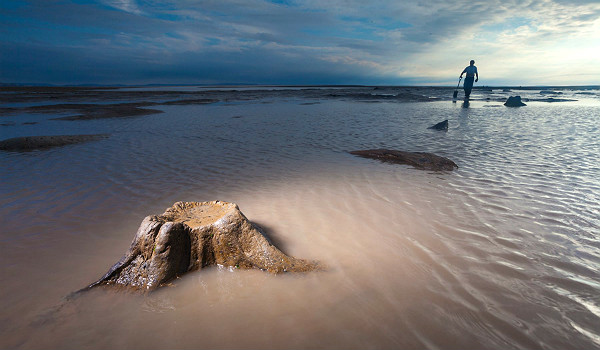
I know many of you who read my blog live on the Southeast and East coast of Britain. You may assume that as you look across the sea from the cliffs of Northumberland, or the shores of Scarborough, there is nothing but an expanse of open water all the way to mainland Europe, but you’d be wrong…
What if I told you, that you live on the edge of what was once the second most biodiverse place on the planet. The home of mammoths, wooly rhinos, bison, and even the home of Prehistoric human communities… Pretty weird to think, eh?
In fact, the area of coastline in the north sea, just off the coast of Northumberland, down to the shores of Dover, is widely regarded as “Europe’s post ice age garden of Eden” and “Britain’s Atlantis.” And for many people, was a sanctuary of human life, but also one of the greatest tragedies of the Neolithic world. Allow me to explain the lost land of Doggerland…
To explain the mysteries of this sunken land, we first have to come into modern times.

Many British and Dutch fishermen for centuries have reported pulling up strangely human artifacts, and large mammal bones while trawling across what is now known as “dogger bank,” an area of shallow water in the North sea. These artifacts include Mammoth bones and teeth, flint tools, deer antler arrowheads, and even human figurines, carved by hands well into the past.
For the longest time, this was a complete mystery to people. Where did these artifacts come from? Why were they there? When were they made? Well, it wasn’t until oil companies began surveying the seabed, and the work of landscape archeologists from the University of Birmingham, that we realized that what we call ‘Dogger bank’ today, was once a vast expanse of rolling hills, forests, marshland, and fertile savannah! Perfect for diverse life, and early human settlement.

So, who lived there, and why?
Well, during the last Ice age, most of northern Europe was an open expanse of ice sheets and glaciers. Pretty damn inhospitable, except for maybe Eskimos?
Either way, with large amounts of the earth’s water supply being locked up in these glaciers and ice sheets, the sea level dropped up to around 120 meters lower than it is today! So, with the sea levels being so low, much of what is now submerged was open savannah, rolling hills, and the perfect habitat for large game, and the hunter-gatherer communities that lived off them!
Paleolithic (early stone age) hunter-gatherer communities would follow these herds of large game onto this newly unearthed, fertile land, and must’ve realized that life was pretty decent on this new world they’d discovered, so much so that they stayed there for thousands of years… Much like Queen Elizabeth the second!
But what made Doggerland so appealing to people?
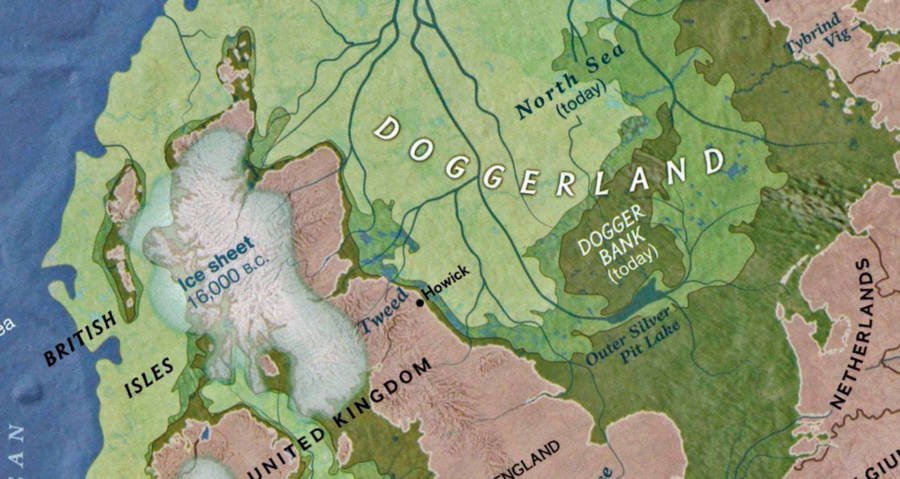
With it being a low lying plain, there were plenty of waterways that ran through it, such as the Thames and the Rhine, which actually connected over Doggerland and flowed south towards the sea, in a river system that we now call the Lobourg river! And where there is water, there is almost certainly life.
There is evidence to suggest that it was along the banks of these now submerged riverbeds that early fishing communities gathered and settled into small villages, that took advantage of these large river systems to feed themselves and their families.
It was at a site near the coast of mainland Europe, where archeologists unearthed sophisticated hollow wooden canoes, and decorated ornate wooden paddles, built in the late Mesolithic era by the inhabitants of one of these riverside dwellings.
At another site just off the coast of the Isle of Wight was where an 8,000-year-old wooden dock was discovered and was thought to be used in boat building, which suggests that the people that lived in these forgotten lands were far from primitive!
Why did they leave?
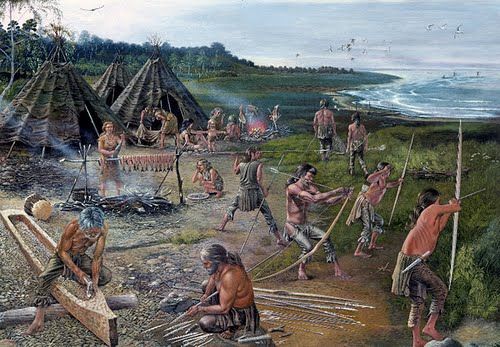
You may be thinking to yourself, “if this place was so good, why would anyone leave?” These were my thoughts exactly, until I discovered the tragedy that unfolded on Doggerland…
As Doggerland emerged at the end of the last ice age, the colossal ice sheets that once took up so much of the northern hemisphere slowly began to melt into the sea, causing sea levels to rise dramatically, at one point the rate of increase was at 3 – 6 feet per century! That may not seem like too much nowadays, but for the low lying plains that once connected Britain to mainland Europe, this was catastrophic!
This flooding caused many of the inhabitants of Doggerland to migrate, either to higher ground in modern-day Norfolk, or the Netherlands. It isn’t hard to imagine that many of the inhabitants that once called Doggerland home would’ve stayed, possibly with the intention of weathering the storm, or hoping that eventually the water would reduce… Unfortunately, the opposite would occur.
Around 8,000 years ago, a massive Tsunami struck the northern coast of Doggerland, and completely destroyed anything in its path, including human settlements. This event was dubbed “the Storegga Slide Tsunami,” and was the result of a massive underwater landslide off the Western coast of Norway, along the continental shelf.
Initially, the Tsunami that was formed reached a peak of 80 meters high, or almost the height of Lincoln Cathedral. It wreaked havoc on the coast of many islands to the north, west and south of Norway, including the Faroe Islands, Iceland, Greenland, Scotland, and of course Doggerland.
For many, this would’ve been the final straw that pushed the migration of people away from Doggerland, and it wouldn’t be long before Europe and Britain were separated once and for all… The original Brexit, if you will.
Many people point out the fact that it wasn’t long after Doggerland was submerged beneath the waves, that large Mesolithic and Neolithic structures, and sites such as Stone henge, West Kennet Long Barrow, Star carr, and other sites emerged across the UK.
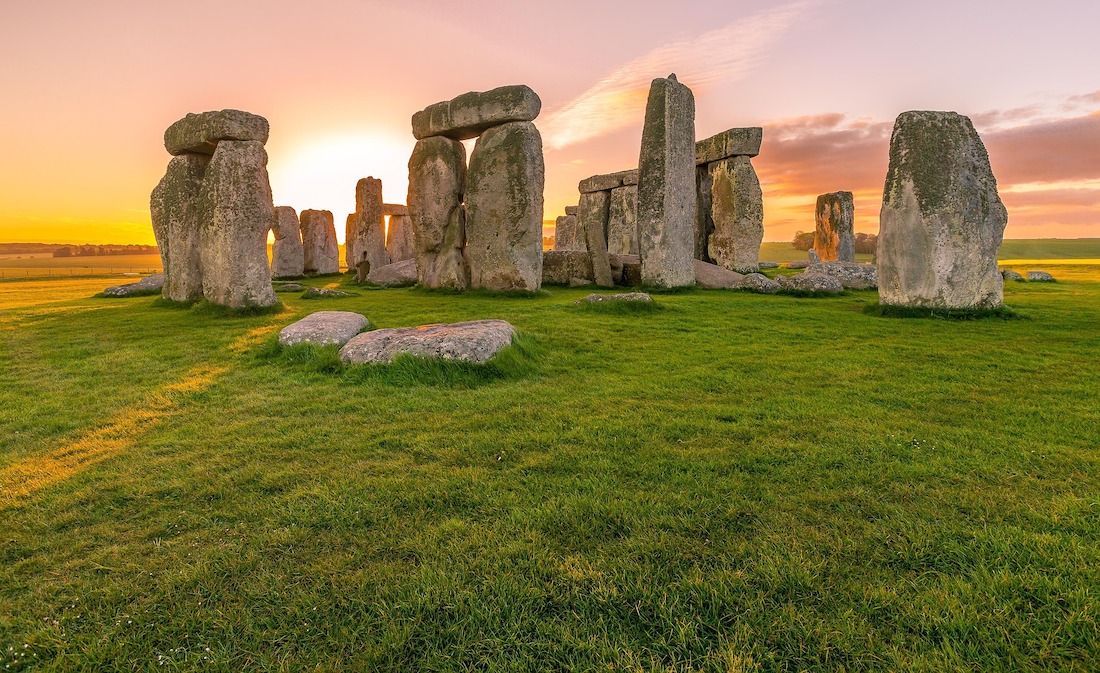
The question is, is there a correlation between the rise of complex structures in Neolithic Britain, and the migration of people from Doggerland?
The answer?… Nobody really knows. It certainly seems plausible that the sudden influx of people from Doggerland could’ve been the catalyst for innovation and societal development in ancient Britain, but if I’m being honest, that’s all my speculation, and couldn’t be more out of my area of knowledge. I’ll leave that for the actual smart people to figure out
Can you still view parts of Doggerland today?
If you’ve ever been to the coast of the UK, you may come across some strangely out of place tree stumps at low tide. I’ve come across some of these off the coast of Amroth beach, near Tenby in Pembrokeshire, and it confused me massively. They were completely submerged most of the time, and it would’ve been completely impossible for any trees to grow there now… So why were they there, and how long ago did they grow?
Well, it all points back to that point in time when the sea levels were much lower than today, and it is the same for a few of the beaches across the Eastern coast of Britain, the only difference is these are the remnants of Doggerland and would’ve played a massive part in our ancestors migration to what would become the British Isles.
Beaches like Low Hauxley in Northumberland hold some of the very last remains of what was once one of the most biodiverse places in the world! If you walk onto the beach, you may well come across an array of tree stumps that date back 7,000 years! The Oak, Hazel, and Alder trees would’ve been some of the first things that the people who migrated out of Doggerland would’ve seen as they reached what is now Northumberland!
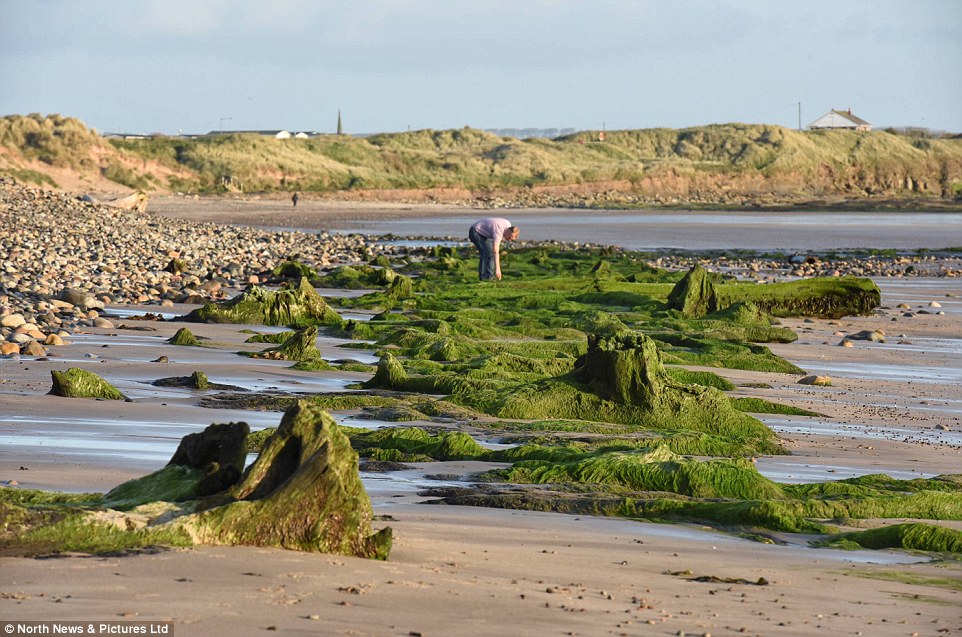
There are actually some direct links back to these Mesolithic people in the area! Archeologists have discovered the actual footprints of the men, women, and children that once called the ancient forest home! How they were able to distinguish between modern footprints and 7,000-year-old footprints though, is beyond me. Still, it’s got to be quite the thing to see.
How can this translate into today’s world?
You may be thinking that the events that lead to Doggerland’s inevitable demise was a one-off thing, left in the past. You’d be wrong, unfortunately.
I won’t sit here and lecture you on the issues of global warming, I’m sure you’re all fully aware of the dangers that it poses, but it just goes to show that melting ice caps and increased sea levels hold no prisoners. Currently, sea levels are rising at around 30cm per century, but this will increase exponentially unless we act soon, with a doubling time of 10, 20, or 40 years.
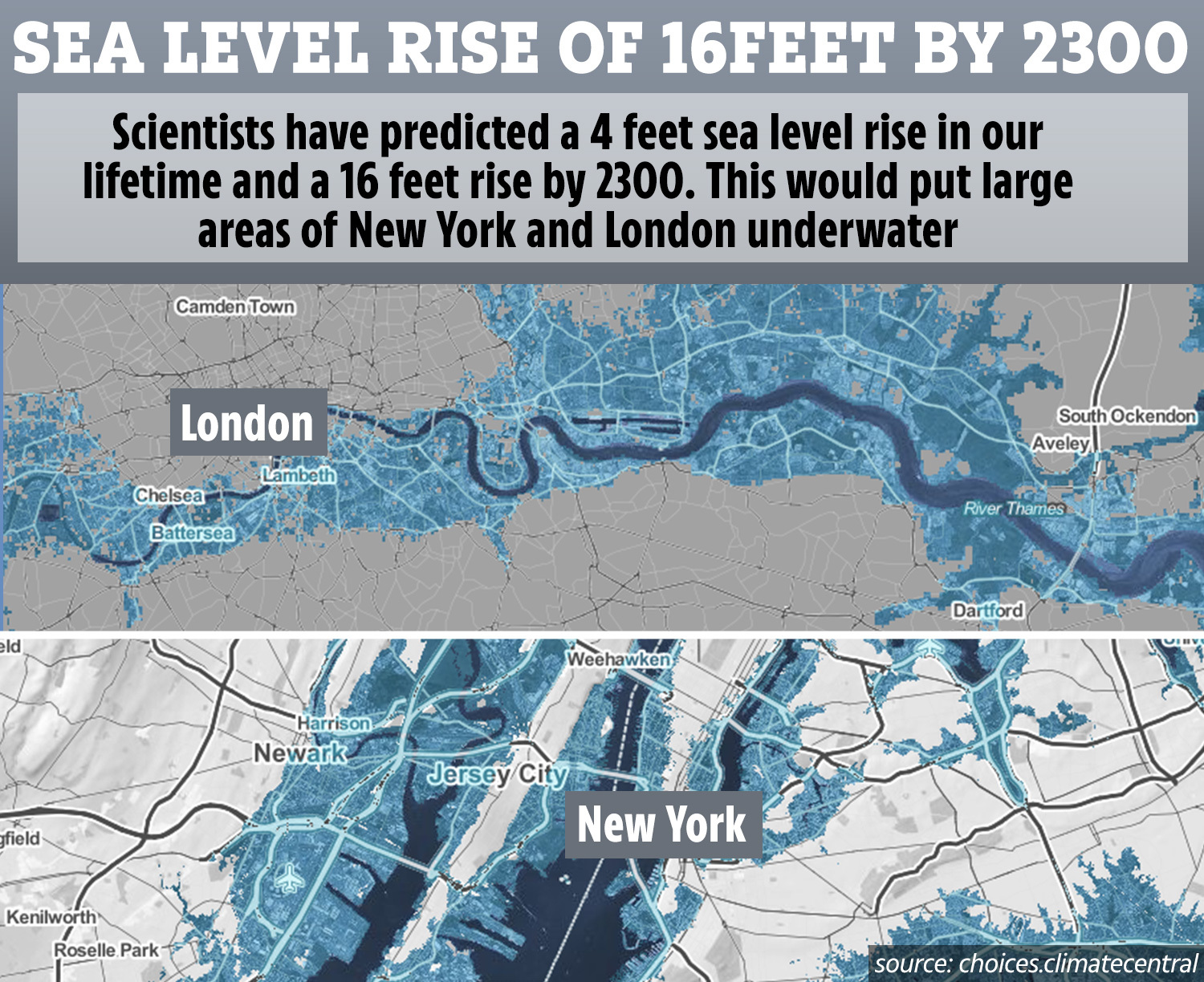
If humanity doesn’t clean its act up, Doggerland will sometime in the near future, be joined by much of the world’s low-lying and coastal areas.
According to Bristiolpost.co.uk, “Rising sea levels would be devastating in North Somerset, with large parts of Clevedon, Weston-super-Mare and Burnham all being underwater by 2050 according to Climate Central,” and that is only a tiny chunk of the area of land that would be decimated by rising sea levels. Not to mention the effect that would have on the people living in the areas, and the environmental impacts this would have…
If you feel as strongly as I do on this issue, please sign the petition below, here is what the “friends of earth” organization want the UK government to do…
- Scrap climate-wrecking projects like airport expansion and new roads
- Unleash local climate action by giving councils the money and powers they need
- Pay our fair share to help vulnerable countries – and stop funding oil and gas overseas
- Create hundreds of thousands of good green jobs
- Insulate every home to cut emissions and end fuel poverty
- Double the tree cover to tackle climate breakdown and support nature
The petition needs 300,000 signatures to be discussed in Parliament. Please sign and share if you’ve got a few minutes spare!
act.friendsoftheearth.uk/petition/climate
Conclusion
I know this post is nothing like my usual ones, but places of British history like this fascinate me incredibly, and I love being able to tell people about the history of our land! I think the story of Doggerland should be something that many more people know about, and I hope that next time you take a trip to the East coast, or maybe cross the channel on a ferry, you’ll stop and think about the massive amount of history that you are looking at!
Leave a comment and let me know if you enjoyed this style of post, I’ll happily do more in the future!
Here is a quick video I watched on YouTube that I think you may enjoy if you are hungry for more information about Doggerland!
(Video courtesy of Atlas Pro, check em’ out!)
P.S.
If you’ve made it this far, maybe take a look at a few of my other posts? It would be greatly appreciated! 😉








